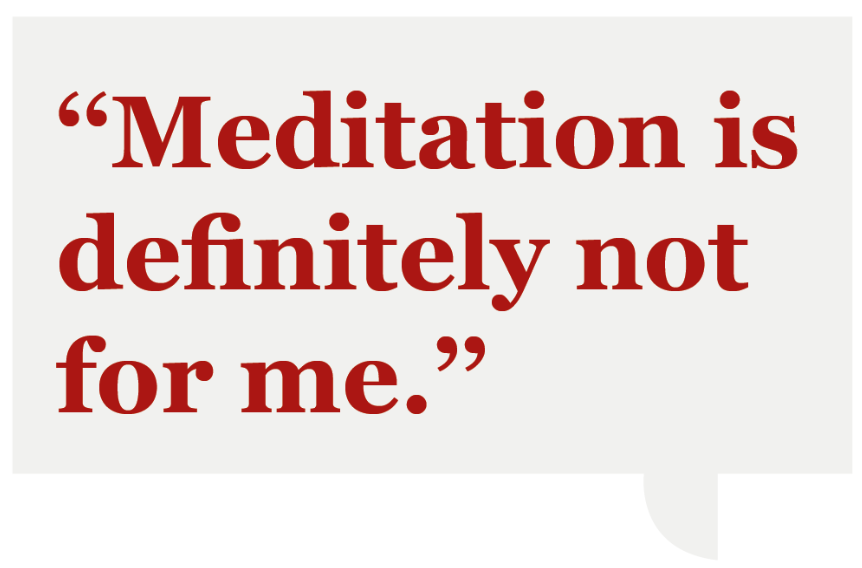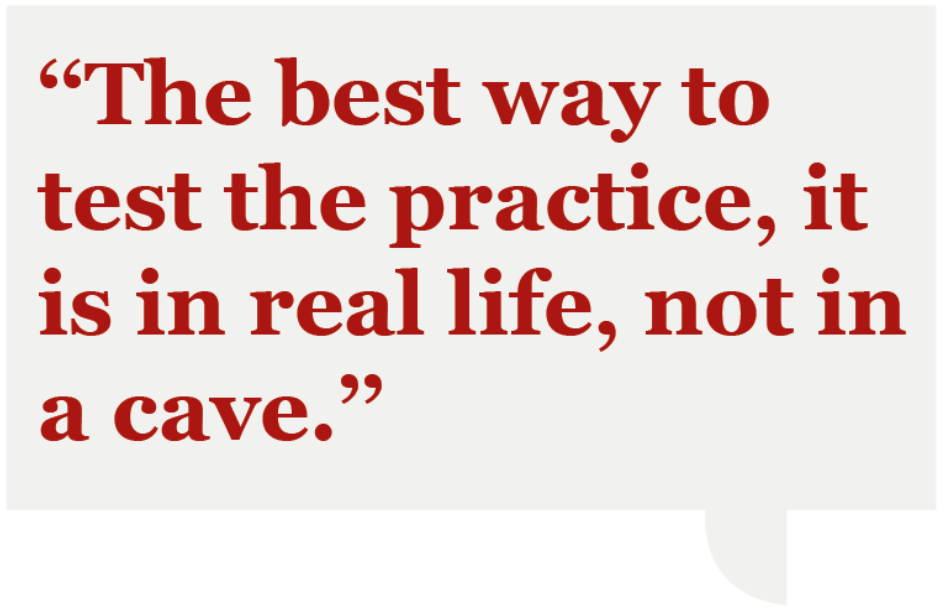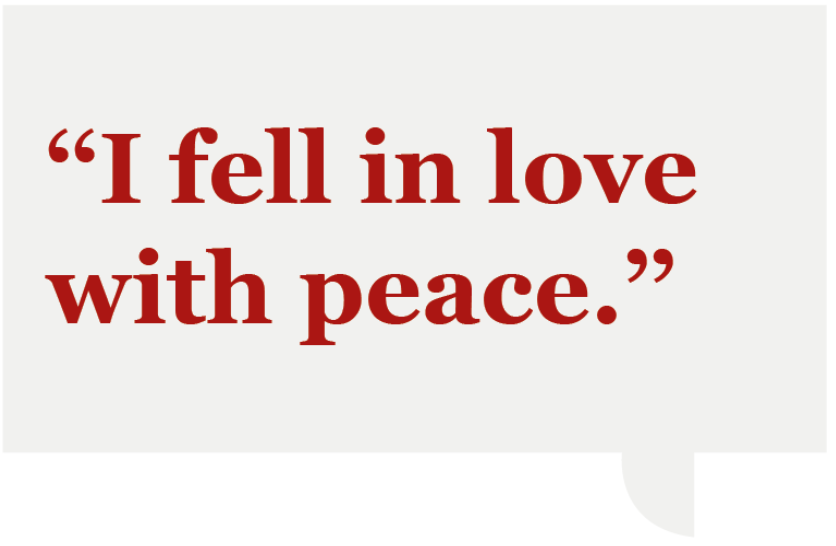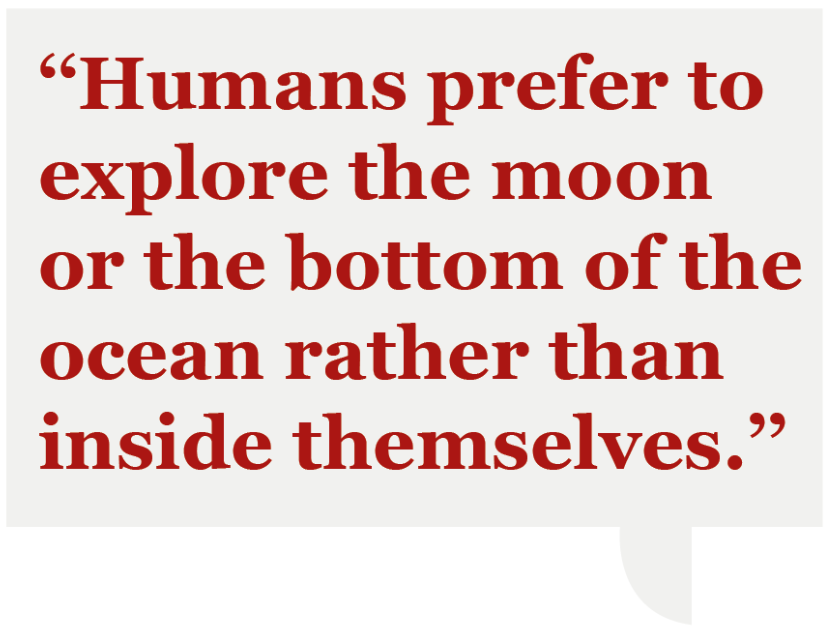Written by Louve Rauwers | Juin 2020.
“Meditation”, is it for everybody?
Vipassana meditation – Part1
When you think about meditation, if the picture appearing in your head is the picture of an old man, sitting in a lotus position, in a cave living in India or a similar mysterious country, dressed with a single piece of cloth, then this article is going to blow your mind!
Photograph: Ksenia Gaillard.
In this article, I will reveal my journey, my incredible experiences with one of the oldest meditation techniques from India. A meditation technique that was rediscovered by Buddha Gotama more than 2500 years ago. “Vipassana meditation” is a powerful method for which the efficacy is proved many times.
If you wonder what meditation can bring into your life, some people may tell you that it is an excellent, safe and proven tool to leave more peacefully in your daily life.
If you ask the same question to some very disciplined practitioners, following this path already for many years may tell you: it is an extremely powerful way to purify any human being to the deepest levels of their soul.

In 2016, I got interested in meditation because my boyfriend introduced me to an app for guided meditation. At that time, I really needed a way to calm my mind. I decided to give it a try.
As soon as I closed my eyes with my crossed legs on the bed, I tried very hard to maintain my spine straight which was very uncomfortable, my legs bothered me, then my nose was tickling … I opened my eyes again, I couldn’t handle it anymore. After this very uncomfortable experience, I looked at the clock and only 3 min had gone by. With a target of 5 min, It was obvious that meditation was not for me.
I remember speaking about it with my boyfriend and he told me about some people who would go to a remote place in a meditation center, where they had to keep quiet and meditate 10 hours everyday for 10 days straight. I can remember what I said “They should be mentally ill, I will never do that.”
There are many techniques arising from different traditions. Some traditions meditate using the repetition of mantras, some other traditions prefer to visualize the mental picture of a god. For other people, it means simply to live in the present moment while cleaning the dishes…
I decided to write an article about meditation and more precisely Vipassana meditation teached by Goenka because it is the one I experienced.
S.N. Goenka in 1986. Sayagyi U Ba Khin Memorial Trust of Massachusetts
Who is mister S.N. Goenka?
Mister S.N. Goenka was a rich businessman, suffering from migraines. Even after he met the best doctors all over the world, no doctor could do anything for him except relax him with morphine injections. The day his doctor warned him with the side effects of the morphine on the long term, he decided that he couldn’t handle this suffering any longer. Mister Goenka discovered Vipassana and decided to give it a try. I failed, and he left. Then somehow, he gave it a second chance.
Little by little, with very hard work on the practice, he healed himself. Then came the urge to share what he learned with his dear ones, especially because at that time, his mum developed a dangerous cancer.
Dhamma, the organization that facilitates Vipassana retreats writes the following:
Since the time of Buddha, Vipassana has been transmitted, until our time by an unbroken chain of teachers. Although Indian by descent, Mr. S.N. Goenka was born and raised in Myanmar, where he learned Vipassana from his teacher, Sayagyi U Ba Khin who was at the time a high Government official. After receiving training from his teacher for fourteen years, Mr. Goenka settled in India and began teaching Vipassana in 1969.
Since then he has taught tens of thousands of people of all races and all religions in both the East and West. In 1982 he began to appoint assistant teachers to help him meet the growing demand for Vipassana courses all over the world.

S.N. Goenka teaches how to live with a real peace of mind, be full of joy and make the best we can out of our life associated ??? with self-responsibility. He said that the best way to test his practice is in real life, instead of being isolated from everybody. Indeed, it is an old man but not one in a cave.
Vipassana centers; what are they?
Many friends and people I met, asked me to teach them the Vipassana technique because they don’t want to invest 10 days of their time in this practice. I told them all “I cannot teach you”.
The 10 days course is the minimum; it provides an essential introduction and foundation to the technique. Developing the practice is a job of a lifetime. Experience over generations has shown that if Vipassana is taught in periods of less than 10 days, the student does not get a sufficient experiential grasp of the technique. Traditionally, Vipassana was taught in retreats for 7 weeks.
But the teachers of this tradition had to adapt to the 20th century. They tried even to teach in a shorter time but they found that less than 10 days is not enough time for the mind to settle down and work deeply with the mind-body phenomenon.
To learn this method, it requests not only the “time criterion”. The teachers selected to give the class are practicing already for many years. All teachers have very strict instructions to transmit the knowledge to the students, to make sure nothing is lost or transformed.
Another criteria is that everything at the Vipassana center is made to avoid every kind of disturbance. It is another very important key to practice correctly.
The wish of Goenka is to maintain the purity of his practice and never do a business out of it. The courses and centers operating under his direction are run on a totally non-profit basis. He wants to spread the practice of Vipassana as a service to humanity, to bring more awareness and light to this world.
S.N. Goenka managed to create places all around the world to give everyone who sincerely wish to learn the technique, the opportunity to free themselves from all worldly responsibilities for 10 days in a quiet place, protected from all type of disturbances, where they receive a room to sleep, meals and a space where they can practice and receive the proper teachings.
Helpers are there to manage everything and make sure that everybody has what they need to be comfortable.
In return, the request is to avoid contact with others, except for essential activities and spend all working hours with the eyes closed and follow the instructions.
The phones, books, pictures, notebooks, rituals, religious practice, yoga, music and even pencil are forbidden. Following a code of morality which include celibacy and abstention of all intoxicants. All is made to avoid disturbances of the outside world, to allow you to investigate the world within.

During my travel to the Middle East in April 2016, I met a young man from Malaysia. Although he was very young, I could feel something was different. And no, I didn’t fall in love but I could feel a strong energy of peace only by being around him.
It’s something I never experienced before so I asked him if he did something special… At that time I was not quiet in my mind at all, so much that even my whole body was not functioning properly under the constant inner stress. Because of that, I was ready to open up and go beyond my current beliefs.
Just by being himself, he explained to me that he was one of those crazy people staying 10 days in silence and meditating the whole day. He told me that he had already attended the retreat 3 times already.
Turkey, April 2016.
Spending 5 days with him in Istanbul, exploring the city, eating the luccums and drinking black tea, I quickly noticed that this guy was not more crazy than anybody else.
A few months later, I gave it a try in a center in the north of Sri-Lanka while I needed to renew my visa for India.
Ready to explore
It was in Juy of the same year that I found myself in a very small room with nothing except for a bed, a mattress of no more than 5 cm thick, some white clothes, shampoo, toothbrush, brush and a barricade I built to avoid ants eating my medicines for my stomach. Everything else I had was in the double-locked compartment of the Vipassana center.
I was ready to explore the world inside of me and to let go of my intellectual conception by simply observing myself. It was easier for me to cross all of India and Sri Lanka by train and end up in an unfurnished room, alone, on a hard bed without being allowed to speak to anyone rather than to close my eyes and allow myself to feel, to explore my inner world.

Before the course started, I had the occasion to speak to a girl just before the course started. This young lady was a doctor from Switzerland.
After 4 days, discreetly, she came to me. I was very surprised! She told me that she really couldn’t handle it and she didn’t know what to do with that. I understood. It was hard!
But I think the only thing I had more than her who made me stay was my strong desire to go out of this constant stress which was gnawing me on the inside for years.
“Humans prefer to explore the moon or the bottom of the ocean rather than inside themselves. But in fact the universe exists for each of us only when we experience it with body and mind. It is never elsewhere. It is always here and now. By exploring the here and now of ourselves, we can explore the world. Unless we investigate the world within, we can never know reality. We only know our beliefs about it, our intellectual conception of it.” – William Hart
Allowing us to feel, accept it and let it go is an act of bravery. It surely is one of the hardest things on earth. And the only way to become free of the heaviness, all the stress we carry inside, is to investigate our inner world to the deepest and let all the truth come to the light to be transformed into great power.
There is no intellectual work here but a strong will to turn our suffering into power. Victimising yourself never made anyone strong.
Here is the key: the suffering we experience in life is never unfair, even if we really think it is. There is no difference with a painful situation, a painful body and painful emotions. It is the way the universe knocks at the door to show us the truth, what we should look at. It pushes us out of our comfort zone to oblige us to overcome and raise our awareness and allow ourselves to become truly who we are.
Buddha speaks about the experience of the truth. He doesn’t speak about any intellectual understanding because it’s simply not comprehensible with our brain.
Vipassana means “insight” in the ancient Pali language and it is a technique that many people used to free themselves from misery. It is a whole different process for each of us but which leads to the same place: A place of inner peace, love and joy, our true nature.
Find “ part 2’’ of this article on Louveyogastudio.com
Bibliography:
- William Hart, “The Art of Living: Vipassana Meditation as Taught by S.N. Goenka, 1987-05.”
- Official Vipassana website: https://www.dhamma.org/en-US/index.
- A Store-House of Answers by Mr. S. N. Goenka, available on https://www.vridhamma.org/A-store-house-of-answers-by-Shri-S-N-Goenka#Cause&Effect.

Recent Comments